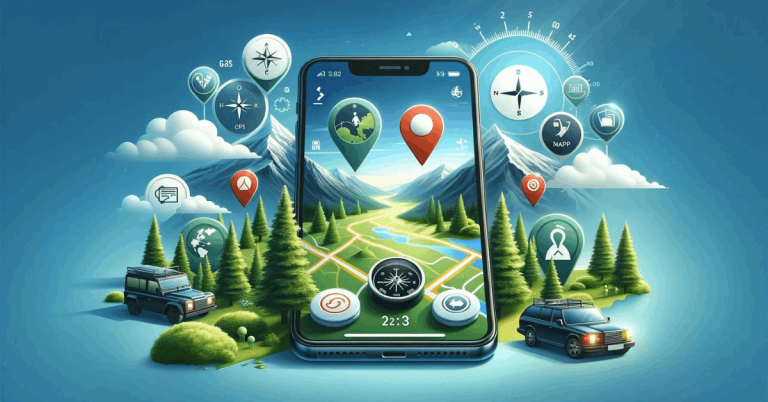In today’s digital age, the internet is vital, seamlessly integrating into daily life and linking people worldwide.
Free WiFi hotspots are key, enabling swift access to online resources, bridging communication gaps, and enhancing user experiences.
If you want to know more about how to find free Wifi hotspots, read this guide.
What is a free WiFi hotspot?
Free Wi-Fi hotspots provide internet access without charge. This offers an affordable alternative to 4G or 5G, which may be costly for heavy data usage.
For those on slower 3G, Wi-Fi can significantly boost internet speeds. Internet cafes might charge for access, sometimes offering faster connections than free hotspots.
However, the speed from public free hotspots generally suffices for most online activities.
Where to Find a Public Free WiFi Hotspot?
There are a couple of strategies to use if you’re looking for a good free hotspot right now.
1. Go to Places Known for Free Wi-Fi
You can find a free Wi-Fi hotspot in various establishments and public areas. Many restaurants and cafes, notably Starbucks, provide complimentary Wi-Fi access.
Public venues like libraries, universities, train stations, and parks typically offer free Wi-Fi. Look around your vicinity, and you’ll likely spot a free Wi-Fi service.
Major corporations actively support connectivity by providing free WiFi. Consider these examples:
- Starbucks: This global coffee chain provides free WiFi, allowing customers to sip their favorite drinks and browse the internet comfortably.
- McDonald’s: This fast food leader offers free WiFi in many global locations, enabling customers to connect while they dine.
- Burger King: Joining the digital move, Burger King provides free WiFi, enhancing the dining experience for customers who enjoy grilled foods.
- Coffee Shops: Globally, coffee shops serve as connectivity hubs. From Starbucks to local cafes, these places offer a pleasant environment to enjoy coffee and internet access.
Beyond cafes, the trend of offering free WiFi extends to libraries, public squares, shopping centers, and transportation hubs, ensuring connectivity in daily living, working, and recreational spaces.
Places and Environments
Free WiFi hotspots are often found in various public and private venues, offering internet access without costly data plans.
- Public Libraries: Worldwide, libraries provide free WiFi and support various online activities.
- Airports: Many airports feature complimentary WiFi, keeping travelers connected during waits or layovers.
- Accommodations: Hotels, motels, and hostels typically provide guest WiFi, enhancing stays.
- Public Transportation: Various city transit systems include free WiFi on buses and trains, making trips more productive.
- Public Spaces: Cities may offer WiFi in parks and squares to encourage connectivity outdoors.
- Educational Institutions: Universities and colleges make WiFi available to students, faculty, and visitors for educational purposes.
- Shopping Malls: These centers often have WiFi throughout their premises, aiding shoppers.
- Community Centers: These facilities may have free WiFi, fostering digital access and community interaction.
- Fast Food Chains: Chains like McDonald’s and Burger King, among others, usually offer WiFi to attract patrons.
- Cultural Venues: Museums, galleries, and theaters might provide WiFi, enhancing the visitor experience.
- Transportation Hubs: WiFi may be available at bus, train, and ferry terminals.
- City Initiatives: Some municipalities launch projects to provide WiFi in multiple locations.
- Events: Outdoor events and festivals sometimes set up temporary WiFi for attendees.
- Coworking Spaces: These spaces, including some that offer free access, provide WiFi to promote networking.
- Tourist Centers: Often found in popular areas, these centers provide WiFi to assist travelers.
Availability of free WiFi varies by region and establishment. Always verify WiFi access before visiting.
2. Use a Wi-Fi Map App
If you need internet access on the go and prefer not to search for Wi-Fi manually, consider using a map app.
These apps display available public hotspots in your vicinity. Below are some recommended apps:
- Wifi map – This is a leading hotspot finder for both iPhone and Android users. It features a detailed map pinpointing numerous Wi-Fi hotspots. Given its extensive database, finding a nearby hotspot is highly probable.
- Wifi finder—Similar to a Wi-Fi map, this app provides a map to locate nearby hotspots and offers the additional feature of downloading maps for offline use.
- Wifi analyzer – Not only does this app help locate nearby Wi-Fi connections and provide data on their internet speeds and is also useful for those needing fast connectivity.
Why Opt for Nearby Free WiFi Hotspots?
You might search for a nearby free WiFi hotspot instead of using your cellular network.
Various practical reasons drive this choice.
- Cost Savings: The top advantage of using free WiFi is the cost reduction. It allows you to carry out tasks online without spending your mobile data, thus saving money.
- Unreliable Cellular Networks: You may encounter weak or non-existent cellular signals when traveling. This makes free WiFi hotspots a necessary alternative to stay connected and complete your tasks.
- SIM Card Issues: Problems with your SIM card might disrupt internet access and mobile calls. In such situations, connecting to a free WiFi hotspot becomes essential to maintain online connectivity.
Top 5 Cities With the Best Wi-Fi Hotspots Worldwide
Free WiFi Hotspots are available worldwide, and many countries offer free wifi hotspots in almost every city. Here are some of the cities with the best Wi-Fi hotspots:
- Seoul, South Korea – Seoul offers ubiquitous free Wi-Fi and boasts the world’s fastest internet speeds. Look for the red sign indicating free public Wi-Fi hotspots throughout the city.
- Paris, France – Paris provides over 200 free public Wi-Fi spots managed by the city’s municipality, primarily for tourists. Named “Paris Wi-Fi,” this network grants a 2-hour connection.
- New York, USA—Numerous restaurants and cafes in New York provide free Wi-Fi. Public spaces like the Public Library and Central Park also offer internet access.
- Barcelona, Spain – With over 700 hotspots in museums, parks, and buses, Barcelona ensures you stay connected. The speed is sufficient for messaging and web browsing.
- Osaka, Japan – Osaka features an extensive network of over 2000 free Wi-Fi hotspots. Registering with “Osaka Free Wi-Fi” allows users to access one hour of internet service.
Conclusion
In the digital era, education, economic empowerment, and social inclusion intertwine through free WiFi hotspots.
Whether global or local, each connection actualizes a more interconnected and enriched world.
Free WiFi transcends simple connectivity; it molds a future where every individual thrives, empowered by limitless internet access.
Read in another language
- Español: Aprende cómo encontrar puntos de acceso WiFi gratuitos
- Bahasa Indonesia: Pelajari Cara Menemukan Hotspot WiFi Gratis
- Bahasa Melayu: Belajar Cara Mencari Hotspot WiFi Percuma
- Čeština: Naučte se, jak najít bezplatná WiFi připojení
- Dansk: Lær, hvordan du finder gratis WiFi-hotspots
- Deutsch: Lerne, wie du kostenlose WiFi-Hotspots findest
- Eesti: Õpi, kuidas leida tasuta WiFi levialasid
- Français: Apprenez comment trouver des points d’accès WiFi gratuits
- Hrvatski: Naučite kako pronaći besplatne Wi-Fi točke
- Italiano: Scopri come trovare hotspot WiFi gratuiti
- Latviešu: Uzzini, kā atrast bezmaksas WiFi karstvietas
- Lietuvių: Kaip rasti nemokamus WiFi taškus
- Magyar: Tanulj meg ingyenes WiFi-hotspotokat keresni
- Nederlands: Leer hoe je gratis WiFi-hotspots kunt vinden
- Norsk: Lær hvordan du finner gratis WiFi-hotspots
- Polski: Dowiedz się, jak znaleźć bezpłatne punkty dostępu do WiFi
- Português: Aprenda a encontrar pontos de acesso WiFi gratuitos
- Română: Învață cum să găsești puncte de acces WiFi gratuite
- Slovenčina: Zistite, ako nájsť bezplatné Wi-Fi hotspots
- Suomi: Opi löytämään ilmaisia WiFi-hotspotteja
- Svenska: Lär dig hur du hittar gratis WiFi-hotspots
- Tiếng Việt: Học cách tìm các điểm phát WiFi miễn phí
- Türkçe: Ücretsiz WiFi Noktalarını Nasıl Bulacağınızı Öğrenin
- Ελληνικά: Μάθετε Πώς να Βρείτε Δωρεάν Χώρους με WiFi
- български: Научете как да намерите безплатни Wi-Fi точки за достъп
- Русский: Узнайте, как найти бесплатные точки доступа Wi-Fi
- עברית: למד איך למצוא את נקודות האינטרנט האלחוטי בחינם
- اردو: مفت WiFi ہوٹسپاٹس تلاش کرنے کا طریقہ سیکھیں
- العربية: تعلم كيف تعثر على نقاط اتصال WiFi المجانية
- فارسی: نحوه پیدا کردن ایستگاههای WiFi رایگان را یاد بگیرید
- हिन्दी: मुफ्त WiFi हॉटस्पॉट खोजने का तरीका सीखें
- ภาษาไทย: เรียนรู้วิธีการค้นหาจุดเชื่อมต่อ WiFi ฟรี
- 日本語: 無料のWiFiホットスポットを見つける方法を学びましょう
- 简体中文: 学习如何找到免费WiFi热点
- 繁體中文: 學習如何找到免費WiFi熱點
- 한국어: 무료 WiFi 핫스팟을 찾는 방법을 배워보세요





